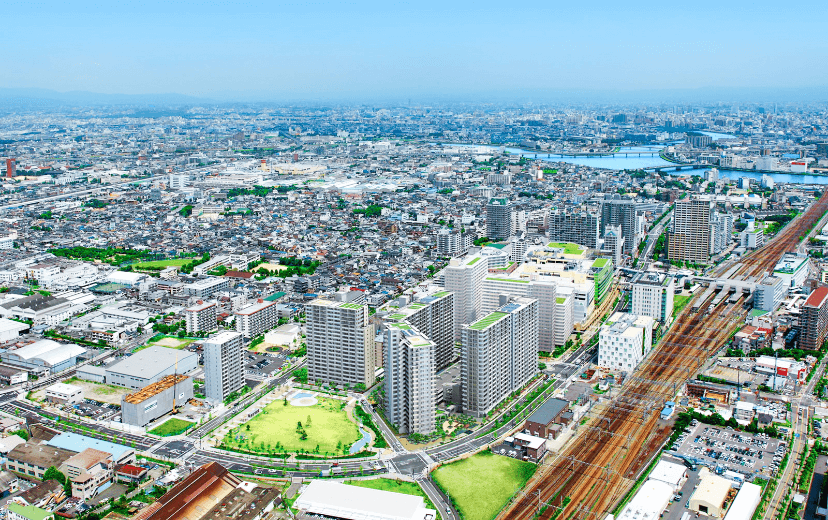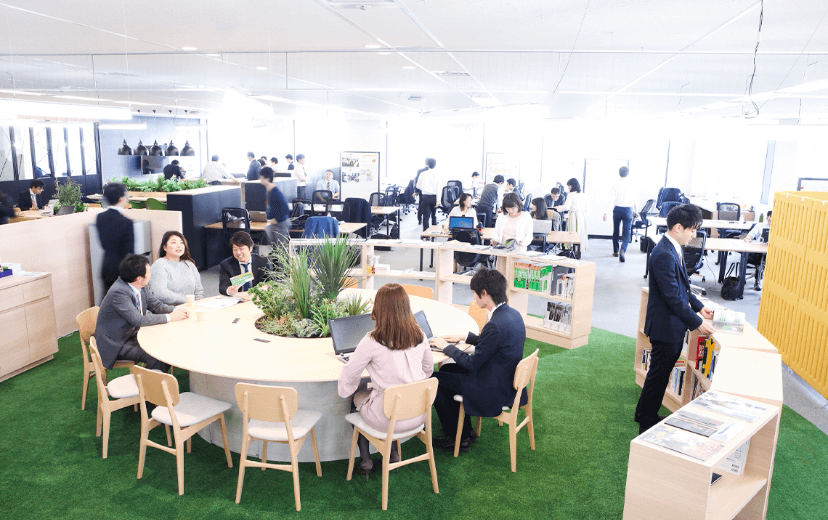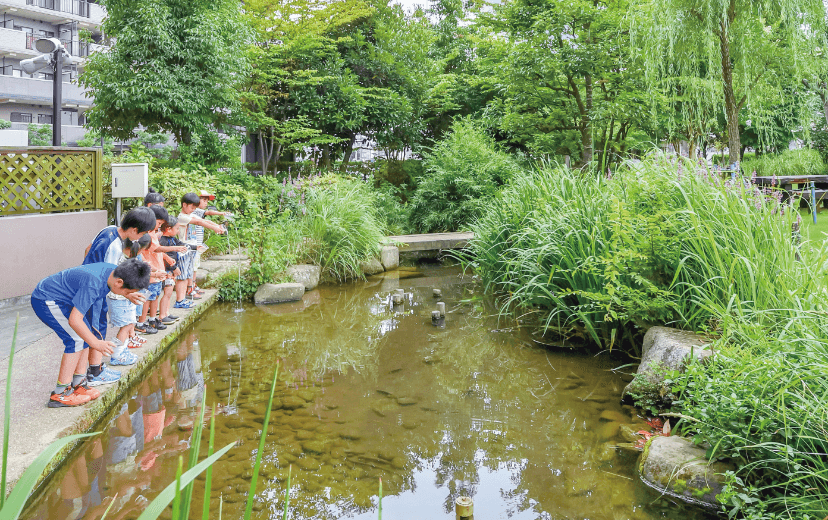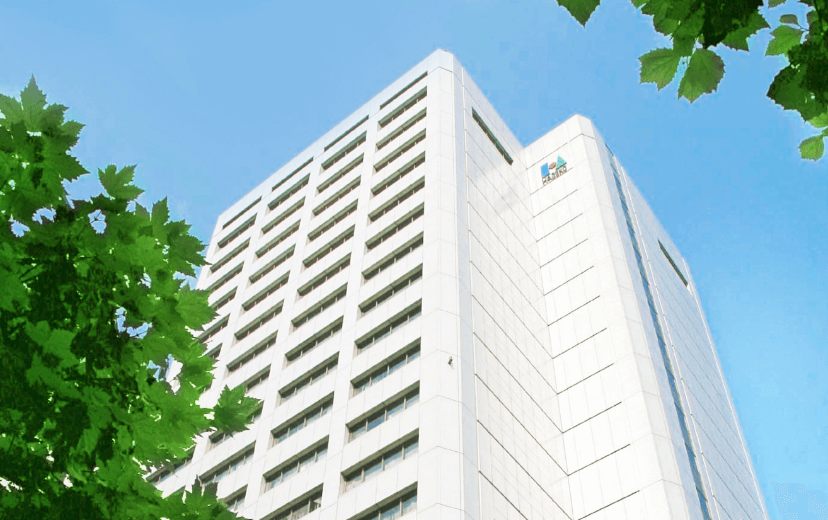Protecting the precious environment
Environmental accounting
We introduced environmental accounting in fiscal 2004 to get a grasp of environmental conservation activities in quantitative terms and promote such activities in an efficient manner.
Basic matters
Scope of calculations
Haseko Corporation's activities
- Completed works at 336 worksites (new building works: 229, demolition works: 37)
*1 Our view on construction work during the target period has changed from fiscal 2021 as follows.
- In and before fiscal 2020: Worksites completed during the fiscal year.
- Fiscal 2021 and after: Worksites in operation during the fiscal year. - Offices
*2 Shiba Head Office Building/Osaka Hiranomachi Building/Yokohama Branch/Nagoya Branch/Haseko Technical Center
*3 Shiba Head Office Building/Osaka Hiranomachi Building
Target period
April 1, 2022 to March 31, 2023
Aggregation method
The following cost items were aggregated by using "Environmental Accounting Guidelines 2005 (Ministry of the Environment)" and "Environmental Accounting Guidelines in the Construction Industry 2002 (Japan Federation of Construction Contractors)" as reference.
- Business area costs
- Pollution prevention costs: Costs for measures to prevent air pollution, water contamination, noise, vibration, etc. were aggregated.
- Global environmental conservation costs: Costs for measures to prevent global warming, save energy, prevent the destruction of the ozone layer, etc. were aggregated.
- Resource circulation costs: Costs for waste separation/recycling and appropriate processing, etc. were aggregated.
- Upstream/downstream costs
Labor costs incurred in proposing environment-conscious designs were aggregated. - Administration costs
Costs for environmental conservation management activities, including CSR activities, and ISO14001 implementation and maintenance costs were aggregated. - R&D costs
Costs for research and technological development related to environmental conservation were aggregated. - Social activity costs
Costs for making donations, providing assistance, etc. to environmental groups and local communities were aggregated. - Environmental remediation costs
Costs for repairing the surrounding environment and other relevant expenses were aggregated.
Environmental conservation costs
| Classification | Description of main activities | Amount of costs (million yen) | ||||||
|---|---|---|---|---|---|---|---|---|
| FY2016 | FY2017 | FY2018 | FY2019 | FY2020 | FY2021 | FY2022 | ||
| Business area costs *1 | 4,191 | 4,006 | 5,216 | 5,958 | 4,689 | 5,300 | 5,425 | |
| (1) Pollution prevention costs | Costs for measures to prevent pollution at worksites | 392.8 | 559.2 | 519.9 | 598.6 | 765.2 | 613.5 | 433.2 |
| (2) Global environmental conservation costs | Costs for stop-idling campaigns and costs for appropriate processing of CFC | 13.4 | 21.2 | 13.5 | 10.2 | 7.6 | 13.0 | 9.2 |
| (3) Resource circulation costs | Costs for separation, recycling and appropriate processing of construction waste | 3,784.8 | 3,425.2 | 4,683 | 5,349.8 | 3,916.6 | 4,673.0 | 4,982 |
| Upstream/downstream costs | Labor costs for environment-conscious designs | 10.9 | 8.8 | 12.3 | 11.6 | 9.3 | 9.7 | 9.8 |
| Administration costs | ISO14001 registration/examination/implementation costs Labor costs for ISO14001 activities Costs for monitoring and measuring environmental impact Environmental education costs |
413.9 | 260.8 | 377.1 | 288.5 | 248.2 | 304.3 | 309.0 |
| R&D costs | Costs for research and technological development related to environment-related technologies | 88.3 | 94.9 | 108 | 204.8 | 187 | 194 | 188 |
| Social activity costs | Donations to environmental groups and local communities | 0.4 | 0.6 | 0.4 | 2.5 | 6.0 | 0.005 | 0.3 |
| Environmental remediation costs *1 | Costs for repairing surrounding environment and manifest purchasing expenses (fund portion) | 144.5 | 76.6 | 110 | 74.4 | 55.6 | 46.3 | 46.6 |
| Total environmental conservation costs | 4,849 | 4,447 | 5,824 | 6,539 | 5,195 | 5,854 | 5,978 | |
Environmental conservation effects Item
| Item | Unit | FY2016 | FY2017 | FY2018 | FY2019 | FY2020 | FY2021 | FY2022 | ||
|---|---|---|---|---|---|---|---|---|---|---|
| Business area effects | Construction activities | Volume of construction waste discharged *1 | thousand tons | 520.2 | 538.3 | 565.5 | 666.9 | 616.8 | 1,260.2 | 947.2 |
| Volume of construction waste recycled *1 | thousand tons | 498.7 | 532.7 | 538.8 | 660.6 | 608.1 | 1,225.8 | 940.8 | ||
| Final disposal volume of construction waste *1 | thousand tons | 21.5 | 5.6 | 26.7 | 6.3 | 8.7 | 34.3 | 6.4 | ||
| CO2emissions (new building construction) | thousand tons-CO2 | 28.9 | 34.7 | 36.6 | 30.4 | 38.9 | 39.4 | 35.0 | ||
| Office activities | Electricity usage | thousand kWh | 6,222 | 6,347 | 6,386 | 7,053 | 7,743 | 7,044 | 6,524 | |
| Copy paper usage *2 | ten thousand sheets | 1,813 | 1,841 | 1,778 | 1,791 | 1,362 | 1,267 | 1,052 | ||
| CO2emissions | t-CO2 | 2,113 | 2,159 | 2,165 | 2,382 | 2,642 | 2,425 | 2,264 | ||
| General waste discharged *3 | tons | 80.1 | 48.0 | 36.6 | 27.6 | 14.4 | 13.5 | 14.9 | ||
| Upstream/downstream* | Green procurement | Steel for electric furnace (reinforcing steel) | thousand tons | 194 | 203 | 228 | 198 | 187 | 169 | 195 |
| Blast furnace cement and freshly-mixed concrete | thousand m3 | 255 | 176 | 225 | 210 | 208 | 225 | 208 | ||
| Recycled tiles | thousand m2 | 310 | 302 | 356 | 329 | 226 | 220 | 246 | ||
| Recycled plasterboards | thousand m2 | 4,055 | 4,566 | 4,765 | 4,793 | 4,537 | 4,900 | 4,828 | ||
| Particle boards (double flooring) | thousand m2 | 96 | 189 | 255 | 247 | 267 | 378 | 272 | ||
| Styrene materials (wall-backing packing) | m3 | 326 | 395 | 419 | 366 | 377 | 325 | 1,005 | ||
| Water-saving toilet bowl | thousand units | 18 | 16 | 20 | 15 | 15 | 16.2 | 16.8 | ||
| Rooftop and wall greening | thousand m2 | 9 | 11 | 11 | 9 | 1 | 9 | 6 | ||
| Permeable paving | thousand m2 | 21 | 16 | 26 | 23 | 30 | 21 | 23 | ||
| SUS piping (water supply piping in communal areas) | t | 98 | 84 | 53 | 29 | 21 | 31 | 47 | ||
| LED lighting equipment | thousand units | ー | ー | ー | ー | 194 | 304 | 176 | ||
| Long vinyl sheets | thousand m2 | 297 | 280 | 383 | 369 | 293 | 329 | 311 | ||
| Extruded polystyrene foam | thousand m3 | 4 | 4 | 4 | 4 | 4 | 34 | 4 | ||
| CFC-free urethane form | thousand m2 | - | - | 389 | 720 | 890 | 892 | 867 | ||
* Upstream/downstream effects of green procurement have been calculated for CFC-free urethane foam since fiscal 2018, and LED lighting equipment in fiscal 2020.
Results of Calculation
- The environmental conservation costs in fiscal 2022 totaled 5,978 million yen.
- 90.7% of the environmental conservation costs was accounted for by the “business area costs,” 91.8% of which was the “resource circulation costs.
- The volume of construction waste discharged was 947,200 tons.
- CO2 emissions from construction activities (new building construction) was 35,000 tons-CO2.
- Copy paper usage in office activities was 1,052,000 sheets.
- CO2 emissions from office activities was 2,264 tons-CO2.
- Sustainability TOP
- Message from the Management
- Message from the Officer in Charge of Sustainability Promotion
- Haseko Group's Sustainability Management
- Climate Change Response
- The Digital Transformation Strategy of the Haseko Group
- D&I at the Haseko Group
- Creating attractive living spaces
- Building a company worth working at
- Protecting the precious environment
- Nurturing a culture of trust
- ESG Data and Disclosures
- External Evaluations and Awards
- Integrated Report
- Philosophy and Policies
- Special feature archives




